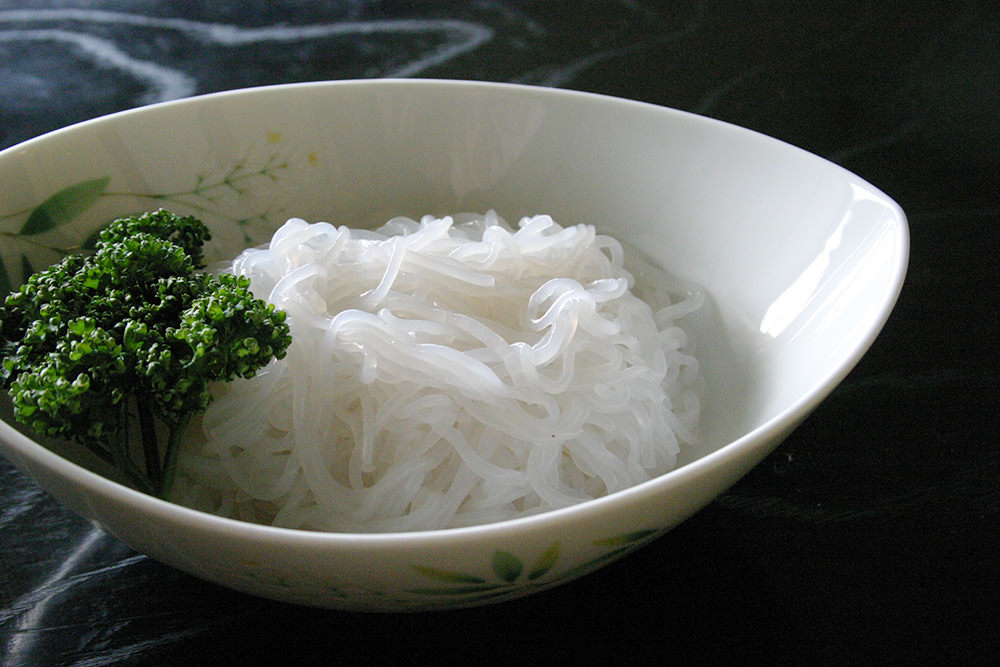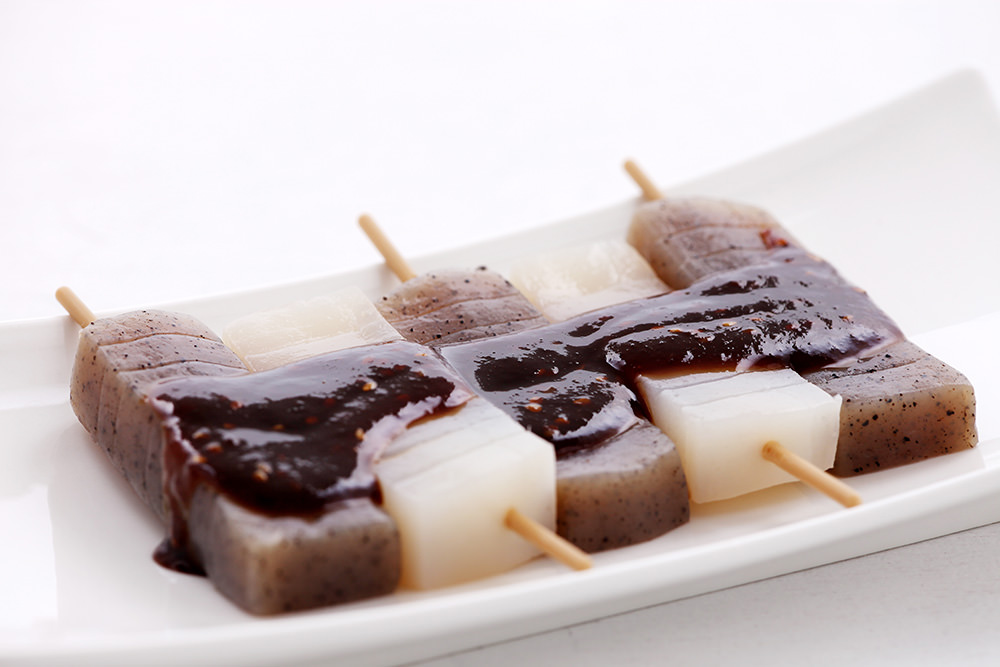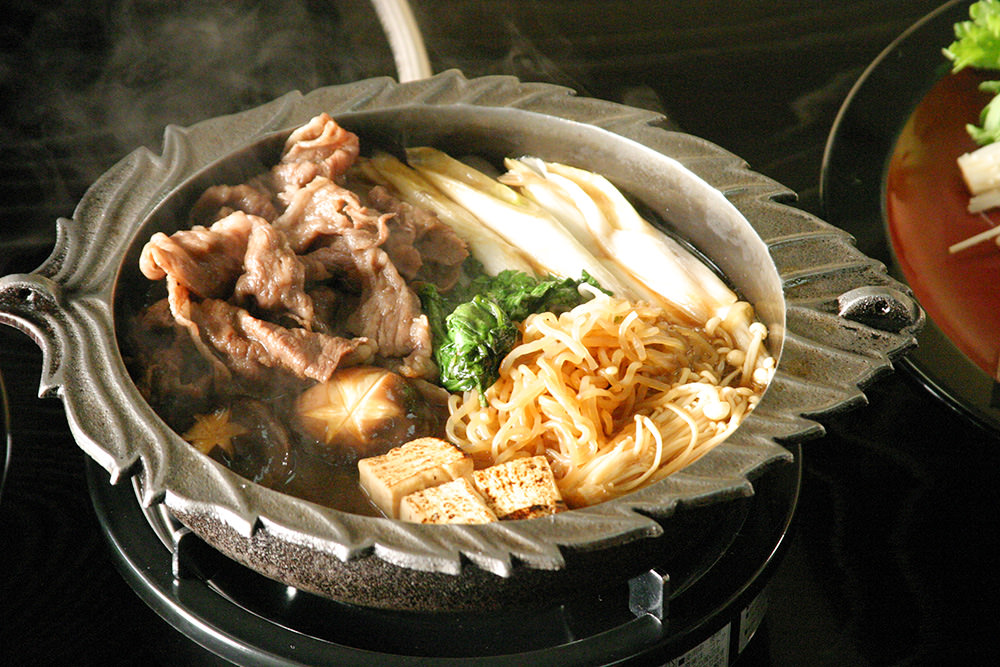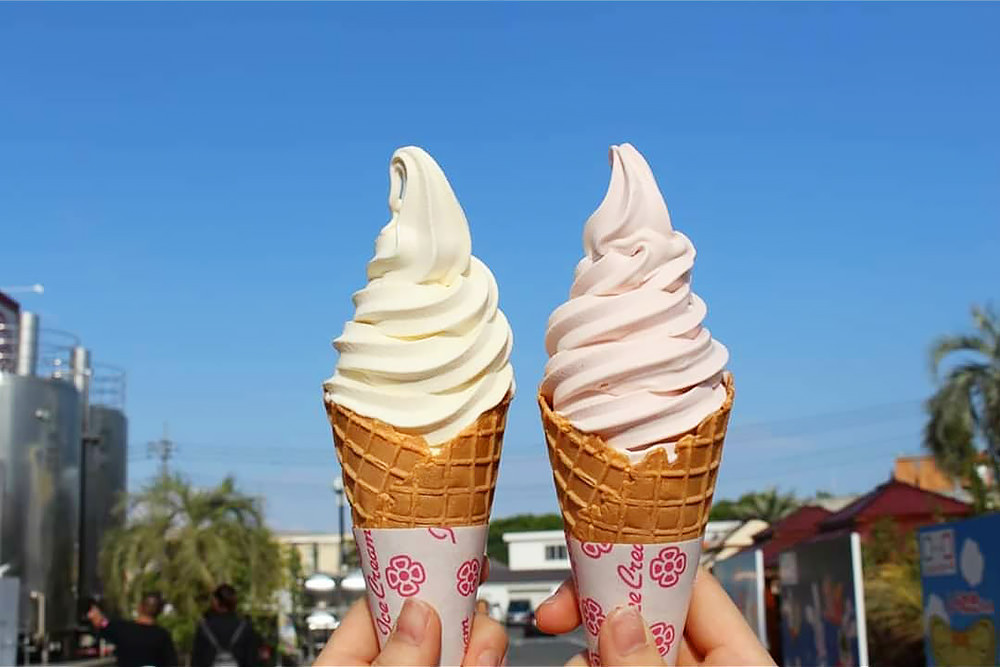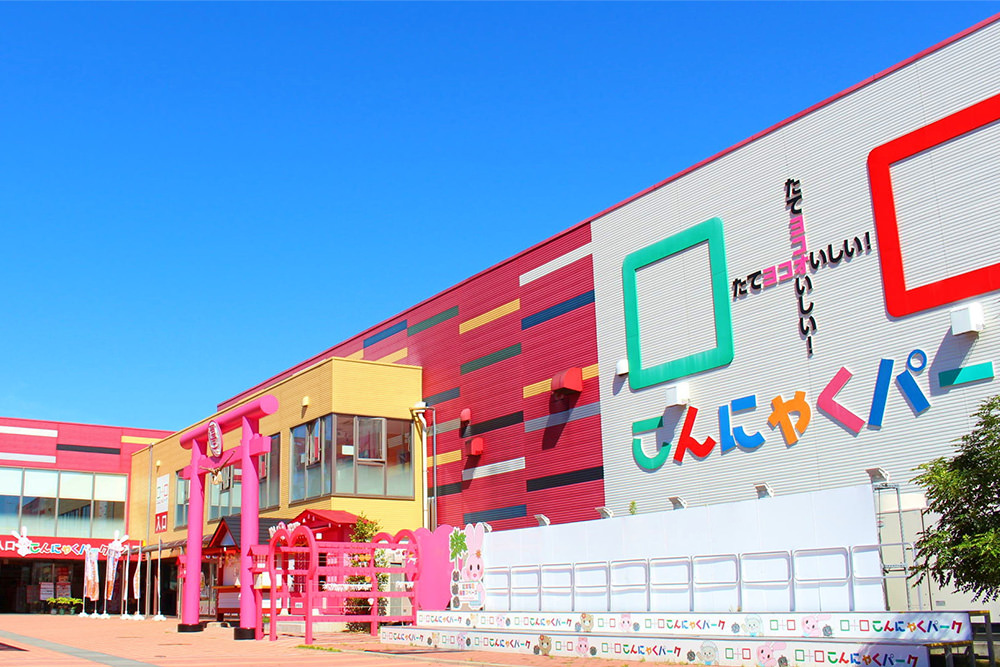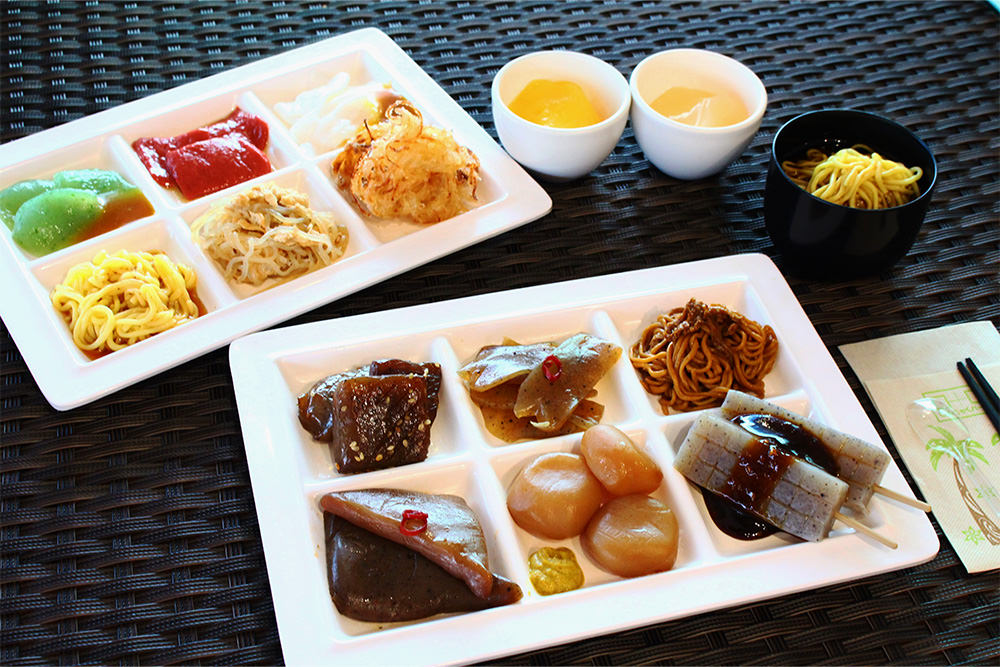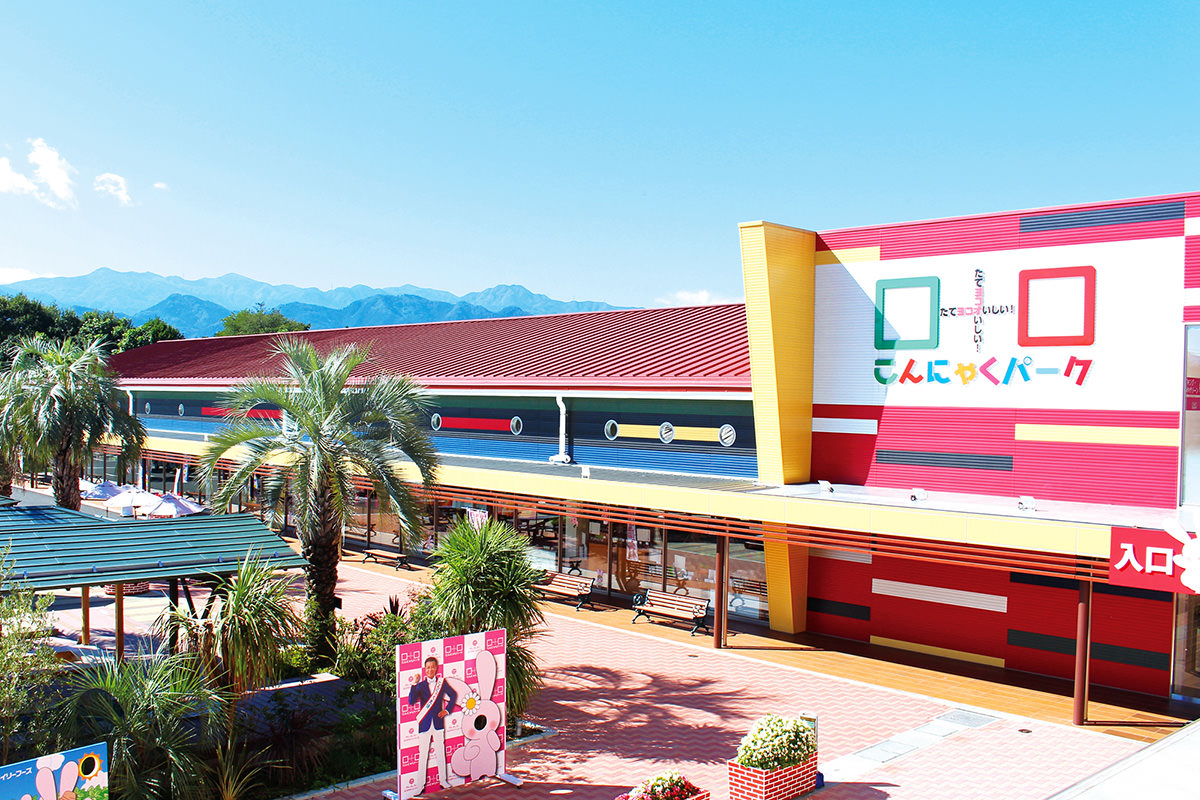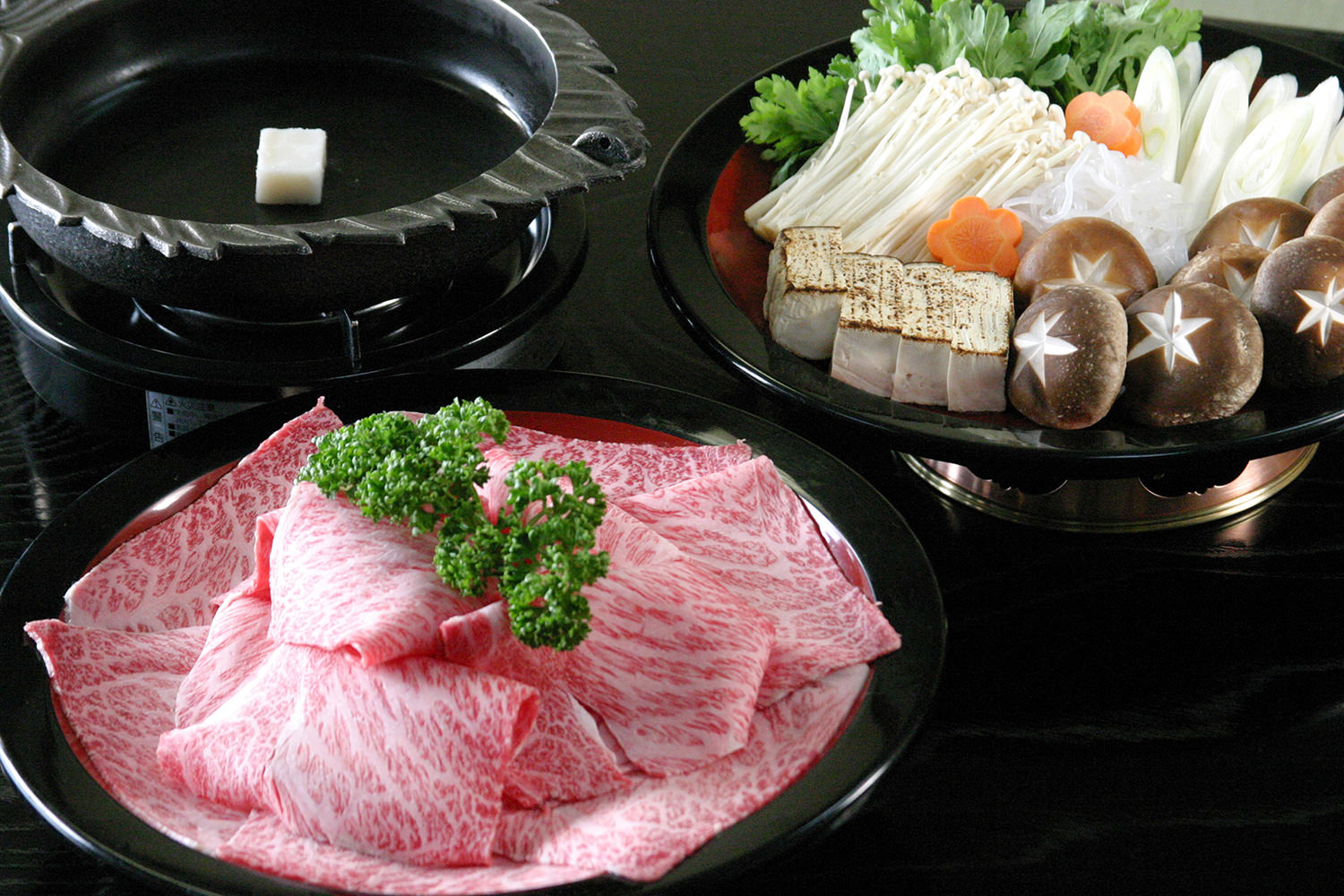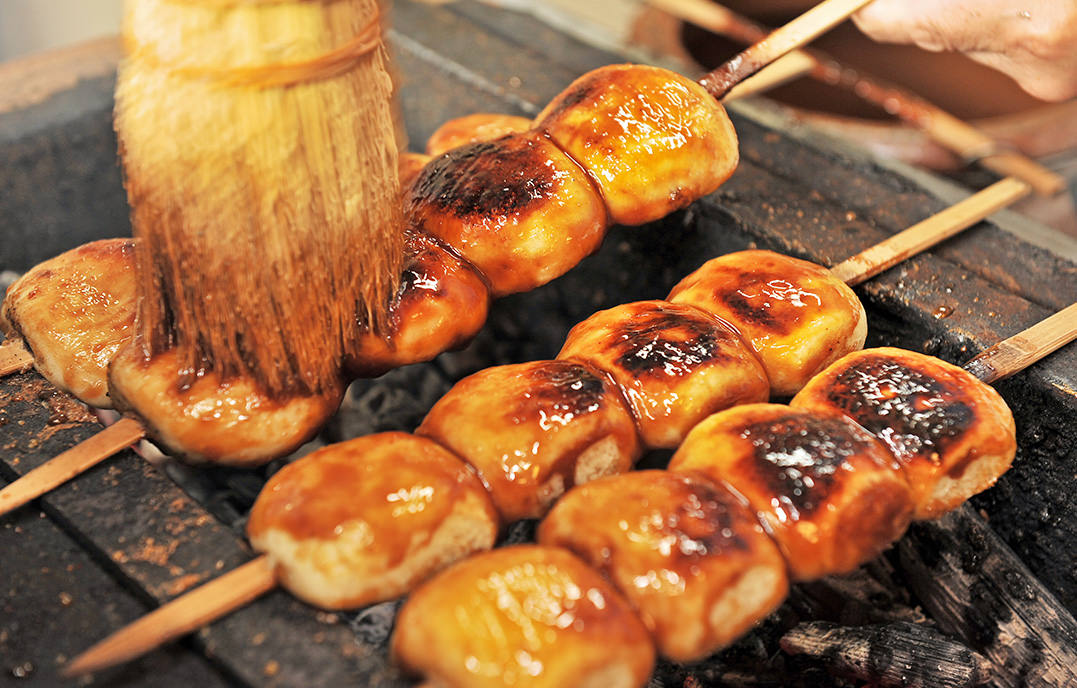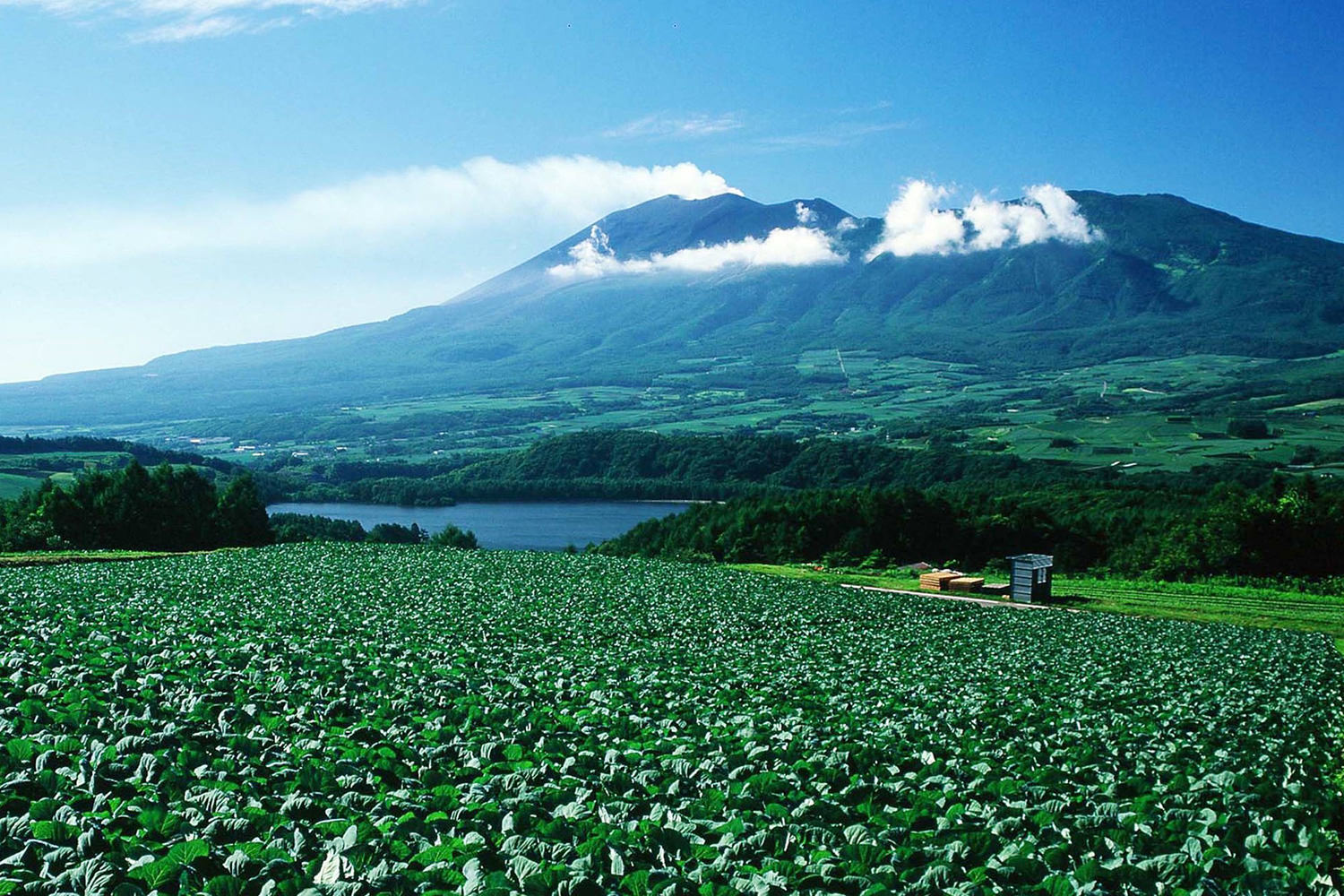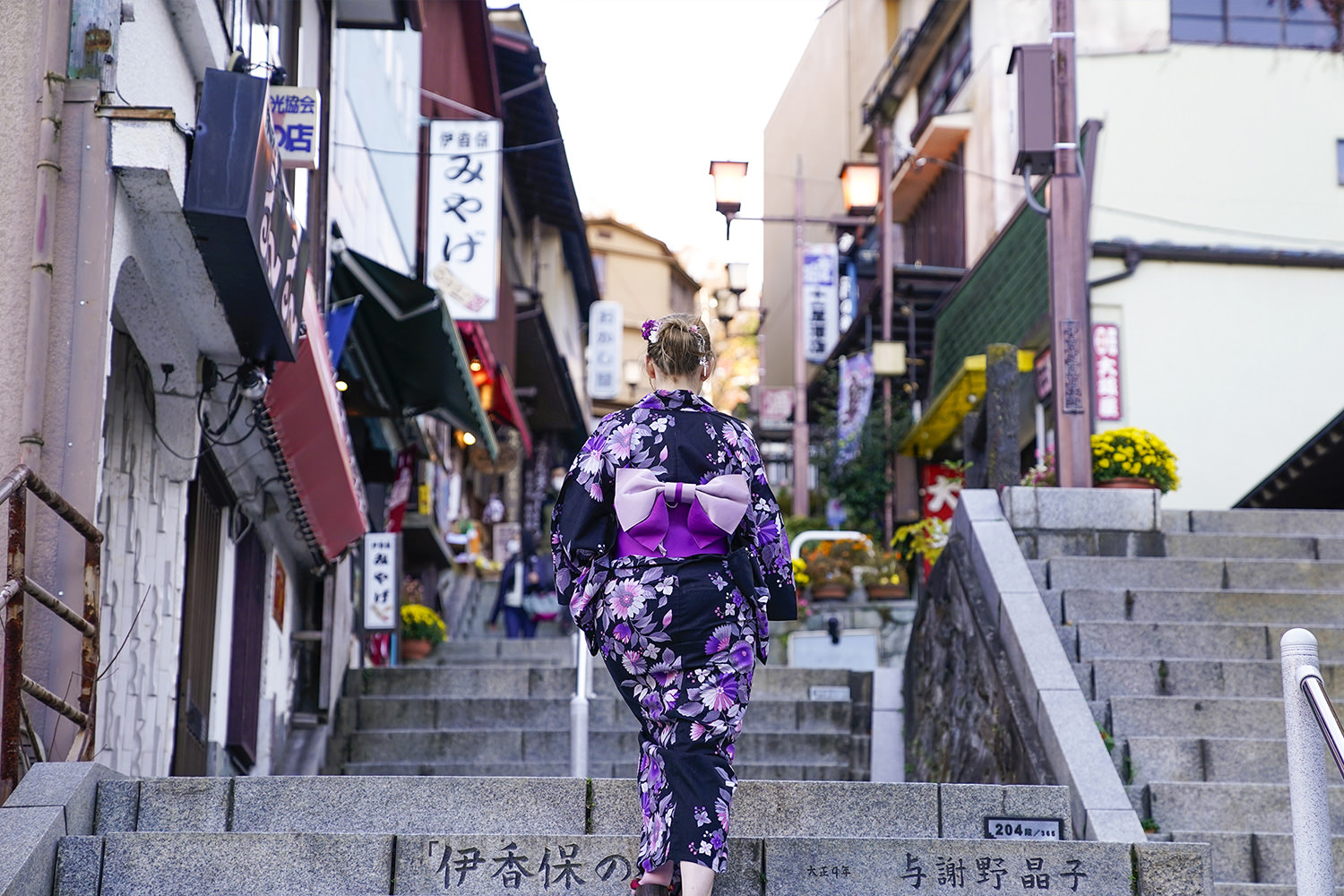STORY
Konnyaku: Gunma's Superfood
Discover the health benefits of konnyaku, an international superfood grown in Gunma
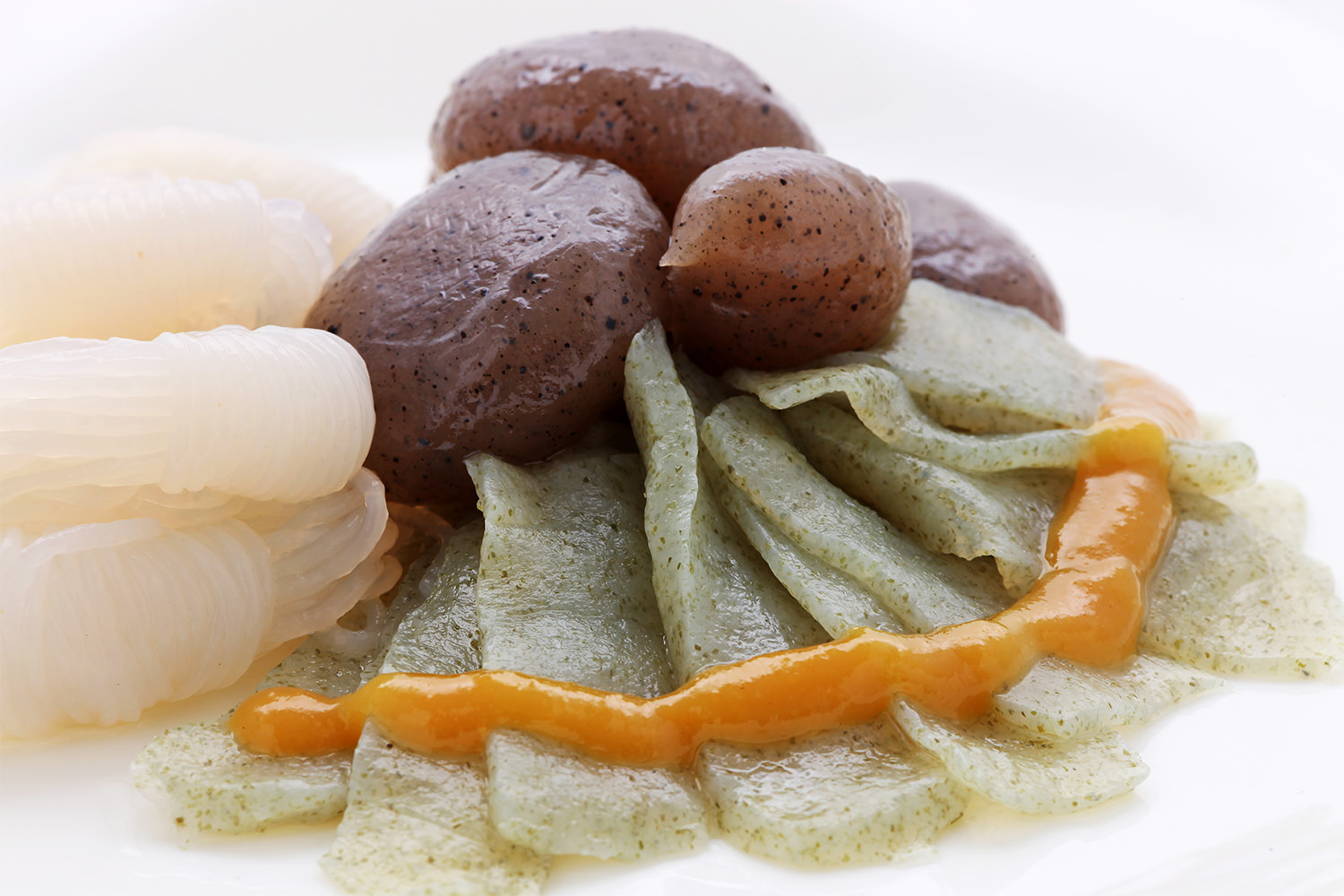
Last updated: August 22, 2024
Gunma is Japan’s leading producer of konnyaku (konjac), a food that is valued for its versatility and health benefits. High in dietary fiber and low in calories, konnyaku is gaining popularity around the world as a versatile, vegan ingredient that can add fiber and texture to many dishes.
Konnyaku is derived from the potato-like corm (bulb) of the konjac plant (Amorphophallus konjac) which is sometimes called devil’s tongue for its distinctive purple lilies. The corm contains glucomannan, a form of soluble fiber which has been shown to lower blood cholesterol and glucose levels and is similar to the soluble fiber found in oats, apples and psyllium. Konnyaku is made by mixing konjac flour with water and an alkaline coagulant. Without other additives, konnyaku is white, but hijiki and kajime seaweeds are often added for color.

